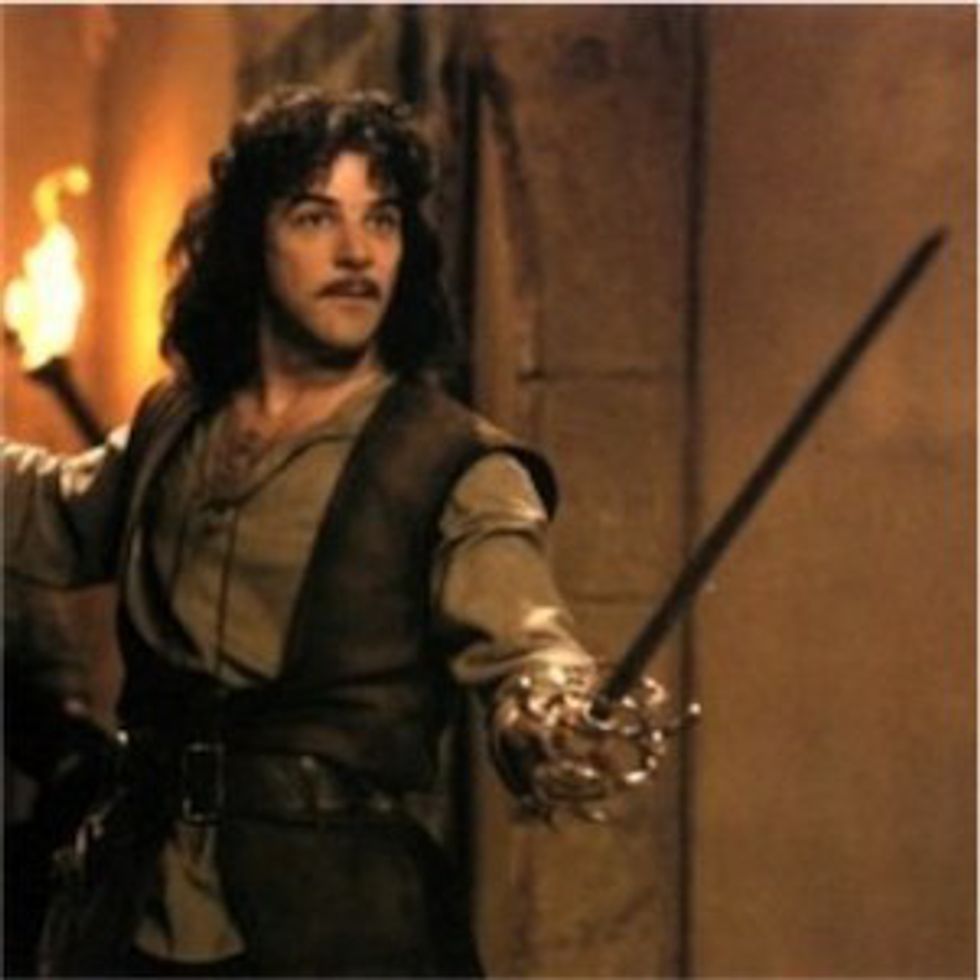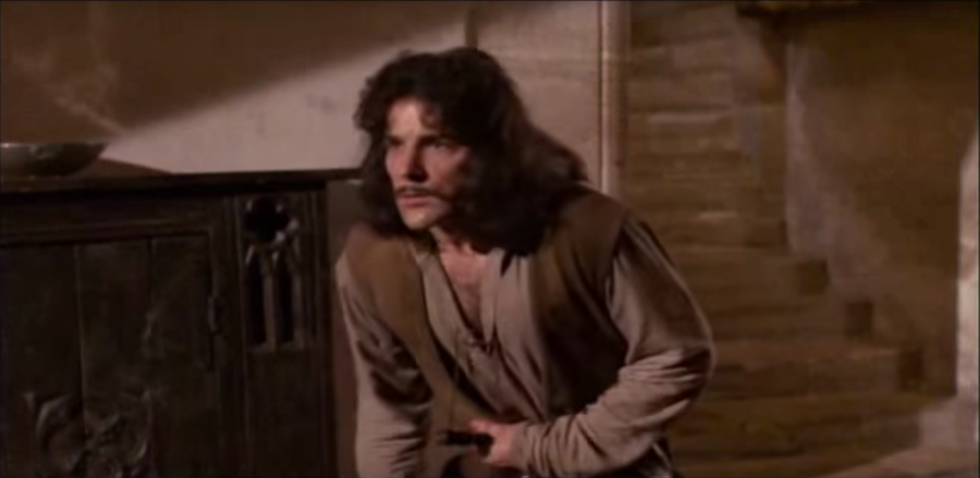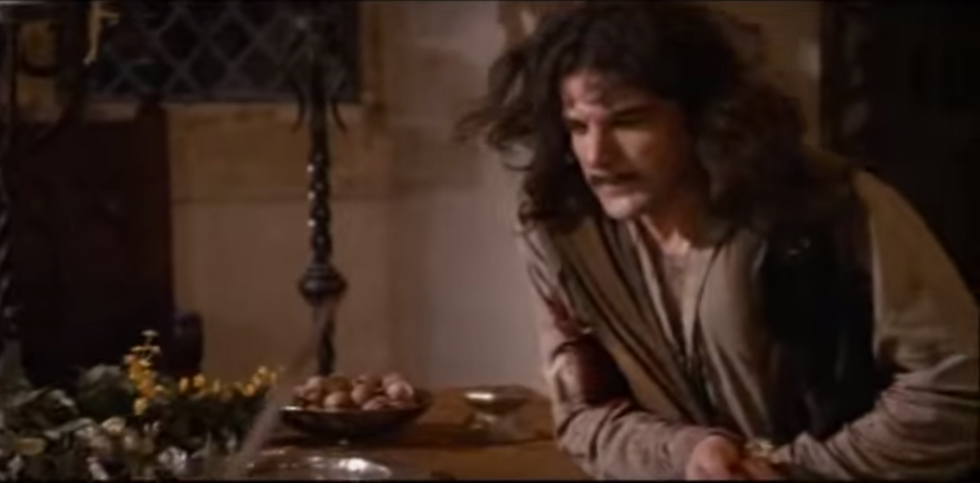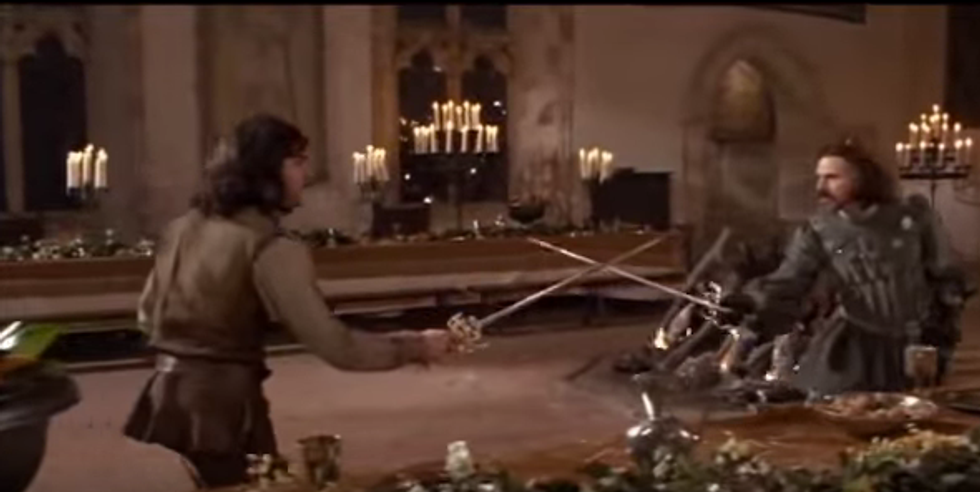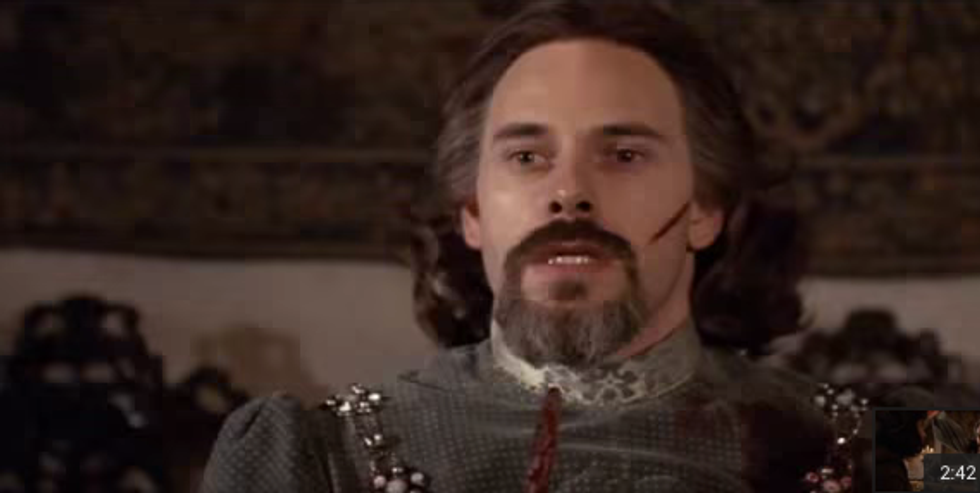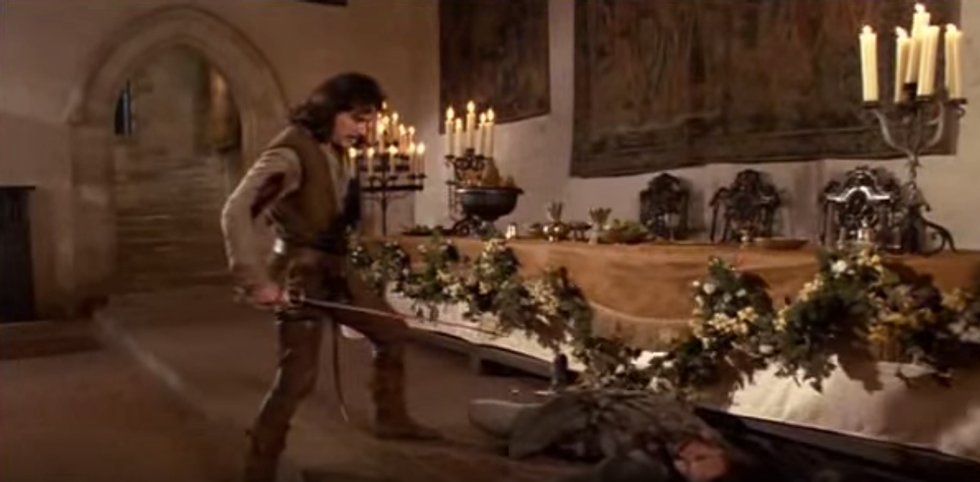The Princess Bride masterfully incorporates sound in a way that complements the arc of character development and action simultaneously.
Director Rob Reiner uses volume, emphasis, and repetition to subtly accentuate turns in favor of events and character control of situations in ways that make the audience laugh and cheer while also inciting viewers to internally plead for the satisfying, Hollywood-typical happy ending.
In this film, Inigo Montoya wants to avenge his murdered father. In preparation for meeting his father’s killer, throughout the film he hilariously repeats his catchphrase, “Hello. My name is Inigo Montoya. You killed my father. Prepare to die.”
Once Inigo has cornered his nemesis Count Rugen, however, audiences’ hope for a fairy tale, good-over-evil ending is seemingly dashed when the six-fingered man unexpectedly throws a knife into Inigo’s side.
The pain forces Inigo into silence, which is emphasized by the low, eerie orchestral score, leaving the audience to second-guess themselves – will Inigo really succeed?
Tension builds further as the count stabs Inigo twice, each gash stressed individually by quick, one-note orchestral spurts. This tension breaks as Inigo at last defends himself, with short, subtle bursts of score emphasizing each clang of their swords. With each note, Inigo gains strength, putting hope tentatively back into the audience’s hearts that he might emerge victorious. At this point, though, nothing is guaranteed as Inigo only half-heartedly rasps out his famous catchphrase and collapses against a table.
However, the audience is strung along as Inigo repeats his catchphrase, this time louder and with more vigor, and, again, the score – also louder – highlights each clash as they fence.
As the music and his words become louder and his actions more accentuated, Inigo gains the upper hand. Count Rugen is put on the defensive as the protagonist even more loudly declares his identity.
Repeating these words grounds Inigo in his fight, while his opponent is only incensed by its repetition (“Stop saying that!” he spat.). The audience begins giggling, since they anticipate Inigo, the loud, confident one, to control the situation from now on. Indeed, the score emphasizes this as the initial part of the scene is reversed: Inigo stabs the count twice, each time again punctuated by a short orchestral sound. As the music becomes louder and ascends in pitch, Inigo yells his catchphrase once again and at last his nemesis is at his mercy. Reiner delays audience gratification when the glorious finale is postponed with one last dialogue exchange in which Count Rugen whispers for life while Inigo speaks calmly at a normal volume; Inigo has the upper hand.
He snarls, “I want my father back, you son-of-a-bitch,” cueing long-awaited cheering and a triumphant score that satisfyingly resolves the scene.
Ultimately, by repeating sound motifs, increasing the volume throughout the scene, and accentuating the action with spurts of music, the sound in The Princess Bride reflects Inigo’s development from silent, weakened man to loud, victorious warrior.




